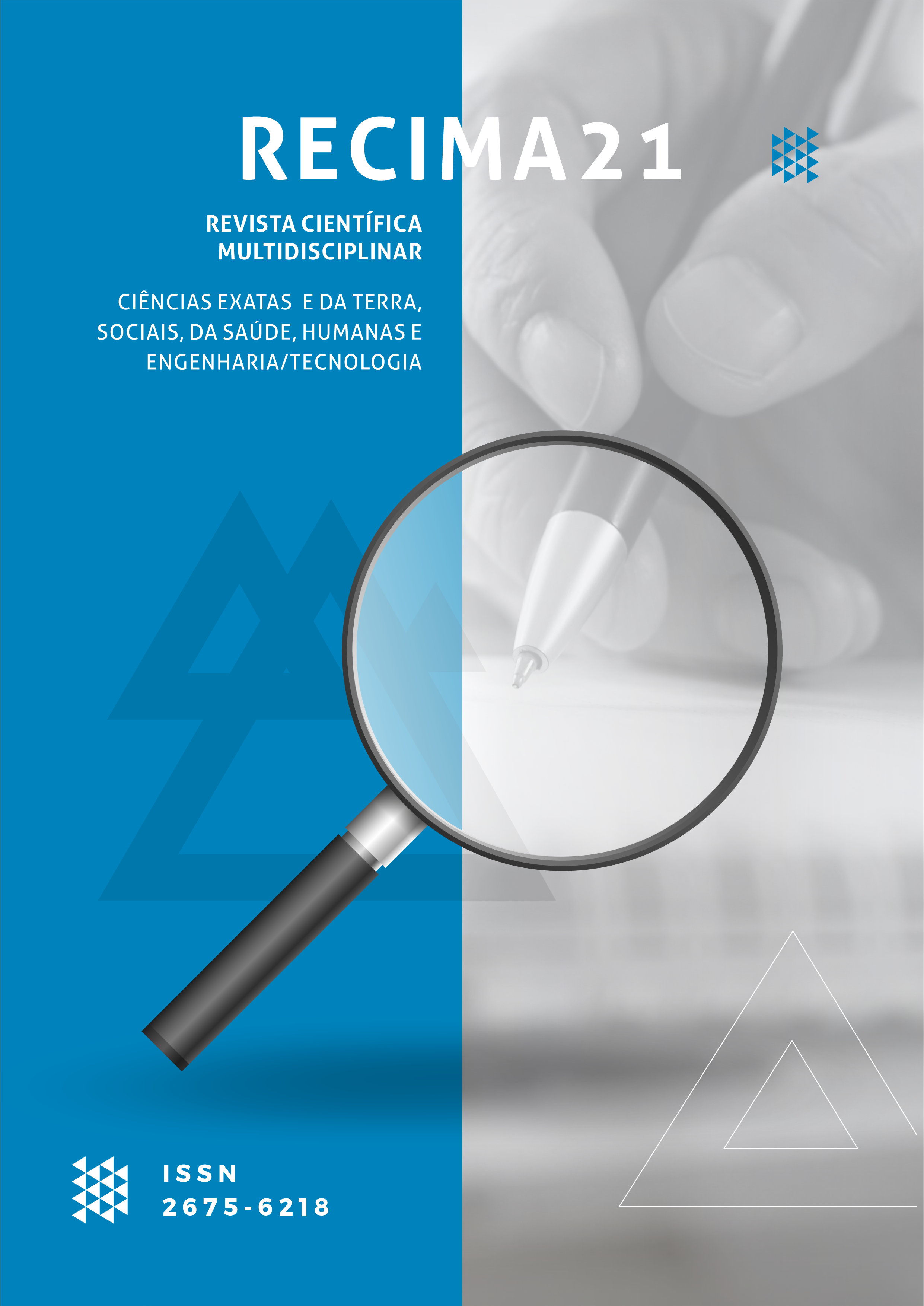TECHNOLOGIES OF PRODUCTION AND QUALITY CONTROL OF VACCINE: A REVIEW
DOI:
https://doi.org/10.47820/recima21.v3i1.1097Keywords:
Vaccines, Immunization, Vaccine technologyAbstract
The discovery of the vaccine came from studies by the British Edward Jenner in 1796. Since then, vaccines have represented one of the most used options in the control and eradication of diseases such as smallpox, polio and many others. The process of obtaining an immunizing agent includes several production operations and strict quality control. A literature review was carried out using the descriptors vaccines, immunization and vaccine technology, using the Scielo, ScienceDirect, PubMed, Bireme and Lilacs databases. The search included publications that highlight the importance of vaccines and the National Immunization Program (PNI) in Brazil, in addition to the technological processes used in the production and quality control of immunizing agents. From the careful selection of studies from the largest industry, it was found that for an application to be necessary, research, investment, time and the use of different technologies divided mainly into seven categories: attenuated vaccines, inactivated vaccines, conjugate vaccines, recombinant vaccines, combined vaccines, reverse vaccinology and therapeutic vaccination. Regardless of technology, a new vaccine requires pre-clinical and clinical tests that certify the effectiveness and safety of the immunizer before being used in the population. After approval, the production of vaccine batches requires a rigorous quality control process for immunizing agents, which includes physical-chemical, microbiological and biological tests. However, there is a clear need for public policies and more investment in research to guarantee the conditions required for new immunization agents according to emerging diseases.
Downloads
References
Coico R, Sunshine G. Imunologia, 6ª edição Rio de Janeiro: Guanabara Koogan, 2010.
Hochman G. Vacinação, varíola e uma cultura da imunização no Brasil, Revista Ciência & Saúde Coletiva. 16(2):375-386, 2011.
Ballalai I. Manual Prático de Imunizações. 2ª edição, Rio de Janeiro: Guanabara Koogan, 2013.
Moraes PL. Memória Imunológica. São Paulo: Mundo da educação, 2017.
Braz LCC, Guimarães DT, Vaz MRF, Nóbrega FFF Contribuições da biotecnologia no desenvolvimento e produção de vacinas. Revista Saúde e Ciência. 2014; 3(3):189-206.
Franco GT, Pereira JS. A saúde pública e a luta para que a população seja imunizada. RECIMA21 - Revista Científica Multidisciplinar. 2021; 2(4): 01-10.
Ministério da Saúde. Vacinação: quais são as vacinas, para que servem, por que vacinar, mitos. 2019. Disponível em: < https://antigo.saude.gov.br/saude-de-a-z/vacinacao/vacine-se > Acesso em 22 ago 2021.
Baylor NW, McVittie LD. Changes in the regulations for vaccine research and development. In: The Jordan Report 20th Anniversary. Accelerated Development of Vaccines, EUA: NIAID, NIH, U.S. Department of Health and Human Services, 2012. pp. 45-49.
Cruz A. A queda da imunização no Brasil. Revista Saúde em Foco. 2017; 20-29.
Ministério da Saúde. Plano Nacional de Operacionalização da Vacinação Contra a Covid-19. 2021. Disponível em: https://www.gov.br/saude/pt-br/coronavirus/publicacoes-tecnicas/guias-e-planos/plano-nacional-de-vacinacao-covid-19 Acesso em 31 dez 2021.
Domingues CMAS, Fantinato FFST, Duarte E, Garcia LP. Vacina: Brasil e estratégias de formação e desenvolvimento em imunizações. Rev Epidemiol Serv Saúde. 2019; 28(2): e20190223.
Stanley P, James MR, Gerard C, Robyn I, Shannon L. The complexity and cost of vaccine manufacturing – An overview. Vaccine. 2017; 35(1): 4064–4071.
FIOCRUZ. Vacinas: as origens, a importância e os novos debates sobre seu uso. 2020. Disponível em: < https://www.bio.fiocruz.br/index.php/br/noticias/1263-vacinas-as-origens-a-importancia-e-os-novos-debates-sobre-seuuso?showall=1&limitstart= > Acesso em 17 ago 2021.
Christopher P. Karch and Peter Burkharda. Vaccine Technologies: From Whole Organisms to Rationally Designed Protein Assemblies. Biochem Pharmacol. 2016 November 15; 120: 1–14.
Plotkin, SL & Plotkin, SA. A short History of Vaccination. In: VACCINES (Stanley A. Plotkin & Walter A. Orenstein). USA: W.B. Saunders Company, 3th edition, 2012. pp.1-12.
Diniz MO, et al. Immune responses and therapeutic antitumor effects of an experimental DNA vaccine encoding human papillomavirus type 16 oncoproteins genetically fused to herpesvirus glycoprotein D. Clin. Vac. Immunol. 2010;17:1576-83,
Francis MJ. Recent Advances in Vaccine Technologies. Vet Clin Small Anim. 2018; 48(1): 231–241
World Health Organization - WHO Manufacturing, safety and quality control of vacines, 2021. Disponível em: < https://www.who.int/news-room/feature-stories/detail/manufacturing-safety-and-quality-control > Acesso 22 ago 2021.
Bellanti JA. Immunology III. Philadelphia: Saunders, 7ª Ed. 2016.
Adu-Bobie J, Capecchi B, Serruto D, Rappuoli R, Pizza M. Two years into reverse vaccinology. Vaccine. 2013;21(7-8):605-610.
Plotkin SL, Plotkin SA. A short History of Vaccination. In: Vaccines (Plotkin AS, Orenstein WA), USA: W.B. Saunders Company, 3th edition, 2019. pp.1-12.
Plotkin AS. History of vaccine development. New York: Springer, 2011.
Gemal A, Leal EC. Controle de qualidade dos imunobiológicos: participação do INCQS, Fiocruz. In: Buss PMI, Temporão JG, Carvalheiro JR. (orgs.). Vacinas, soros & imunizações no Brasil. Rio de Janeiro: Editora Fiocruz, p. 131-144, 2015.
Novaes MLO, Almeida RMVR, Bastos RR. Assessing vaccine data recording in Brazil. Revista Brasileira de Epidemiologia. 2015.18(4):745-756.
Nedelman M. Are you protected from measles? It may depend on when you were born. CNN, 26 abr. 2019. Disponível em: < https://edition.cnn.com/2019/04/19/health/measles-vaccine-protection-age/ >. Acesso em: 12 out. 2021.
Marketsandmarkets. Vaccine markets by diseases and technologies, report 2019. Disponível em: < https://www.marketsandmarkets.com/Market-Reports/vaccine-technologies-market-1155.html >. Acesso em: 22 set. 2021.
Barbano DD. Innovation, network and biotechnological partnerships: new challenges for biopharmaceutical process development – transforming the way WHO regulated products are developed, evaluated and manufactured. Lecture. In: IV International Symposium On Immunobiologicals/VII Seminário Anual Científico E Tecnológico, Bio-Manguinhos/Fiocruz, Rio de Janeiro, 2019.
Downloads
Published
How to Cite
Issue
Section
Categories
License
Copyright (c) 2022 RECIMA21 - Revista Científica Multidisciplinar - ISSN 2675-6218

This work is licensed under a Creative Commons Attribution 4.0 International License.
Os direitos autorais dos artigos/resenhas/TCCs publicados pertecem à revista RECIMA21, e seguem o padrão Creative Commons (CC BY 4.0), permitindo a cópia ou reprodução, desde que cite a fonte e respeite os direitos dos autores e contenham menção aos mesmos nos créditos. Toda e qualquer obra publicada na revista, seu conteúdo é de responsabilidade dos autores, cabendo a RECIMA21 apenas ser o veículo de divulgação, seguindo os padrões nacionais e internacionais de publicação.













